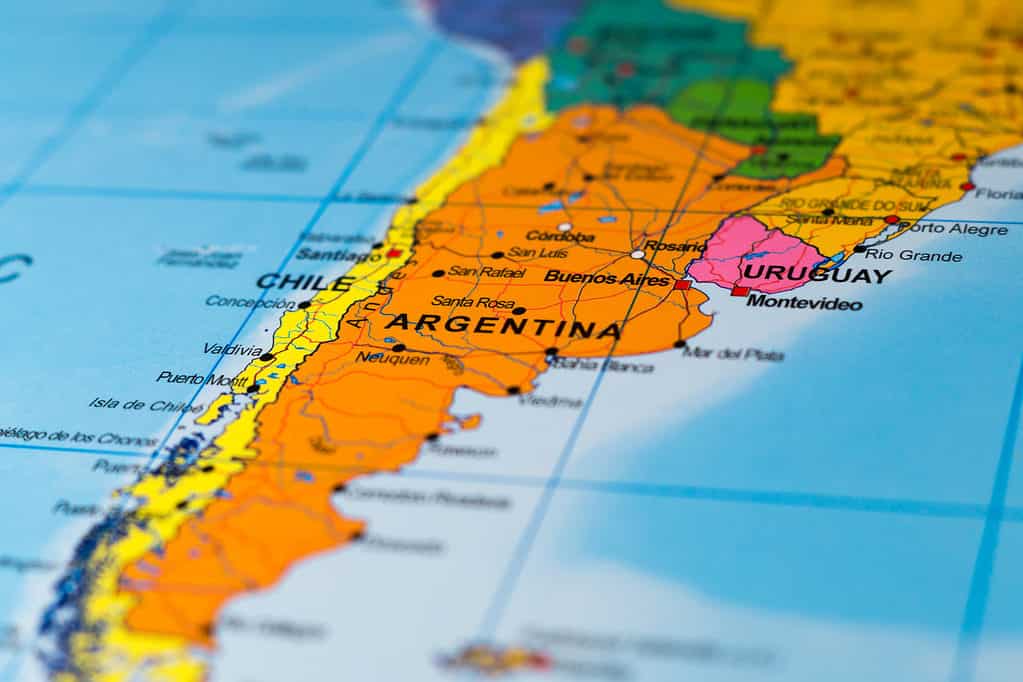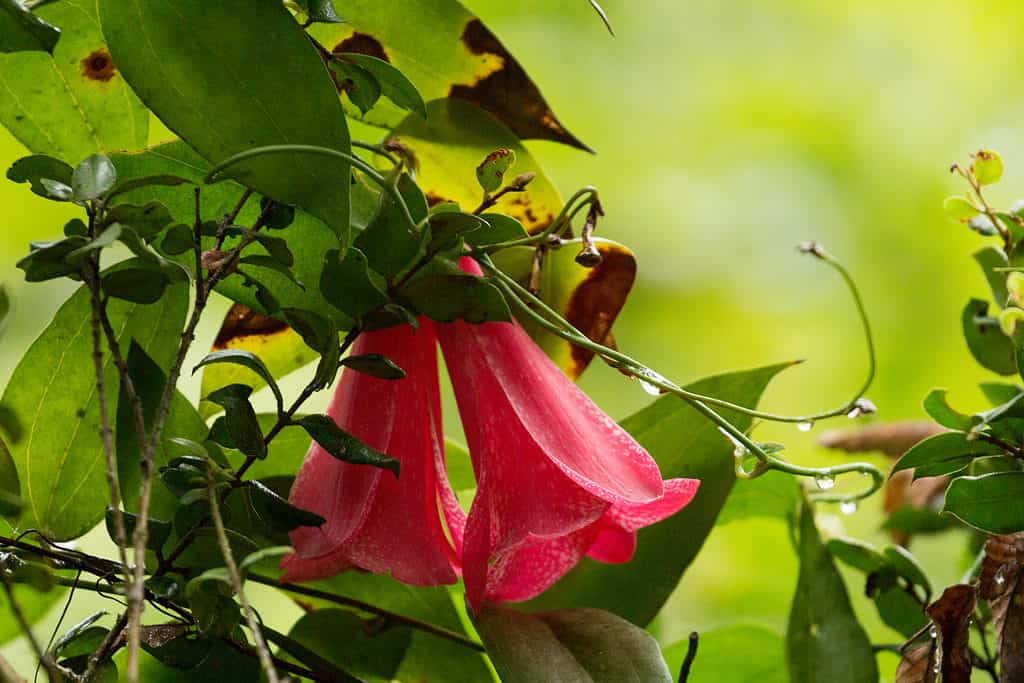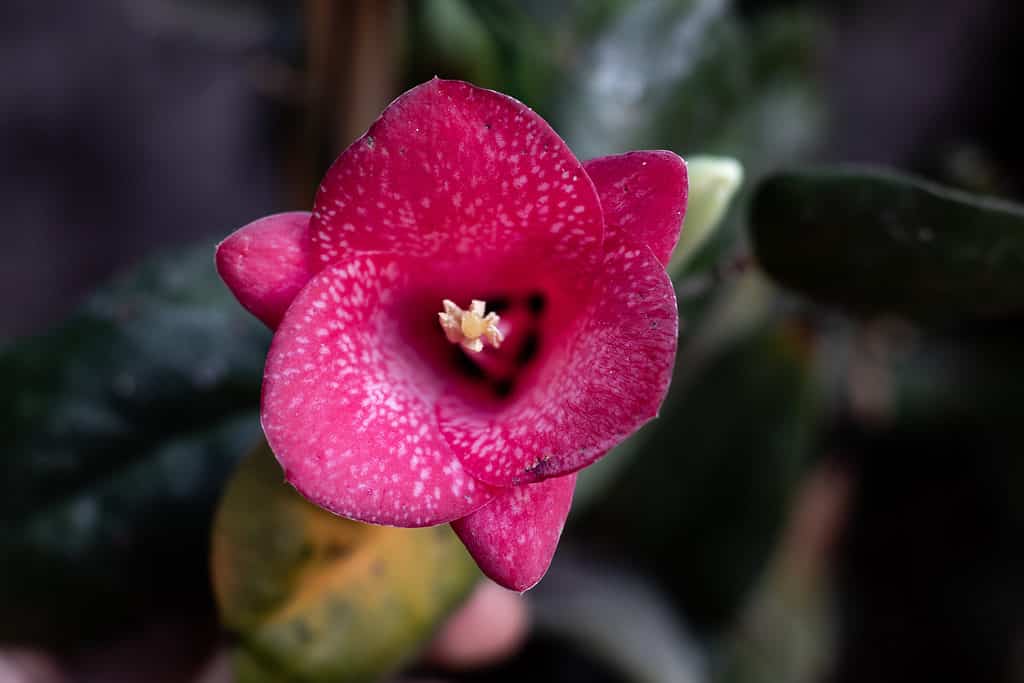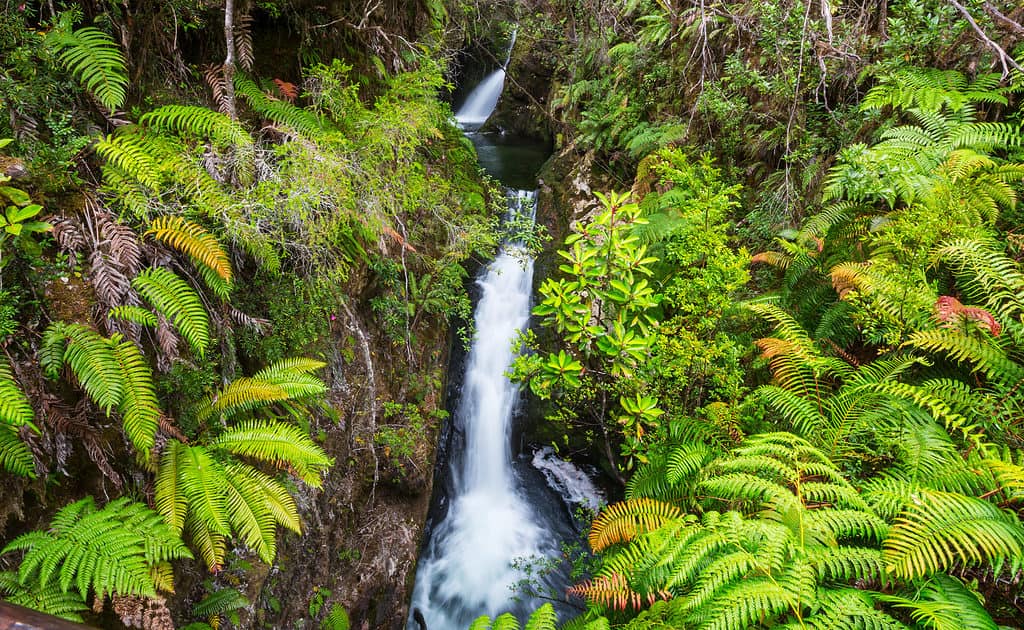This article will introduce you to the national flower of Chile and explore its cultural significance. But first, let’s learn a little bit about Chilean geography. Chile is a geographically diverse and unique country on the western coast of South America. The country is approximately 2,700 miles (or 4,300 kilometers) long, with its northern edge bordered by Peru and Bolivia and the country’s land extending to South America’s southern tip, at Cape Horn. Chile is known for having a long, slender shape and geography dominated by the Andes Mountains. However, the country is also defined by extremes. The northern part of the country is tropical. The southern part is subantarctic and very cold.
Chile is also subject to extreme weather events and natural disasters, from volcanic eruptions to tsunamis, earthquakes, floods, droughts, and storms. In this unique part of the world, Chile is home to approximately 30,000 different species. About a quarter of these are endemic to the country. In fact, the central and southern parts of Chile are considered a hotspot for biodiversity and a region where you can find hundreds, and potentially even thousands, of native species not found anywhere else in the world.
Among these species is the national flower of Chile: the lapageria. This flowering plant appears in the forests in the country’s southern regions, where numerous species of plants grow in temperate rainforests. As the national flower of Chile, the lapageria was chosen to represent the country’s biodiversity, a landscape of extremes, and the culture of the people. The rest of this article will explore the lapageria in greater detail. Let’s learn all about this beautiful plant, Chile’s national flower, together now!

Chile is a geographically diverse and unique country on the western coast of South America.
©Timyee/Shutterstock.com
What Is Chile’s National Flower?
The national flower of Chile, the lapageria, is a species of climbing plant that grows in the country’s temperate rainforests. The lapageria is also commonly called the Chilean bellflower or “copihue.” The word “copihue” is derived from the Mapuche language, which is an indigenous language spoken by the Mapuche people of Chile and Argentina.
Lapagerias are easy to identify – they are a bright, vibrant pink – and native to the country of Chile. As the national flower of Chile, it’s a valued symbol of the people, their identity, and Chilean culture. It is also illegal to pick, and it has been ever since 1977 when it was chosen to be Chile’s national flower. However, not only can you find it growing natively in the forests and conservatories of Chile, but each year during Chilean independence celebrations, people decorate using faux lapagerias to represent the country and their patriotism.

As the national flower of Chile, the lapageria was originally named after Josephine de la Pagerie, an empress of France.
©S.verhasselt/Shutterstock.com
What Is the Lapageria?
The lapageria, also known by its scientific name, Lapageria rosea, is an evergreen climbing plant that blooms with beautiful pink flowers. As the only species in the genus Lapageria, this plant is very unique. It grows natively in Chile’s southern rainforests, which are full of ferns, evergreen conifers, bamboo, and beech trees. Amid these plants, the lapageria thrives. As a climbing plant, the lapageria grows up trees and shrubs. Sometimes, you can find lapageria reaching heights as great as 30 feet or taller!
Lapageria rosea has green, pendant-shaped leaves which are leathery or waxy in texture. These are evergreen and grow year-round, climbing up the trees of the lapageria’s rainforest home. Each year, the plant blooms with bright pink flowers during the summer season. These remain vibrant well into the fall. The flowers of the lapageria, which are sometimes called “lapageria roses” are bell-shaped and approximately 3 inches long. They are a bright pink or sometimes reddish color on the outside, with white spots on the inside of the flower’s bell.

In Chile, lapageria grow in the country’s Valdivian temperate rainforest.
©Rodrigom Lira Alarcon/Shutterstock.com
Where Does the Lapageria Grow?
Where Lapageria Plants Grow in Chile
In Chile, lapageria grow in the country’s Valdivian temperate rainforest. This “ecoregion” is a narrow strip of land between the Andes and the Pacific Ocean. This area has often been isolated and undisturbed and is one of mixed forests made up of conifers, beech trees, and other vegetation, such as ferns. It is also home to South America’s tallest tree, the alerce tree, which is the now-endangered species Fitzroya cupressoides. This region is home to hundreds of unique species of plants, amphibians, birds, fish, and reptiles.
In the Valdivian forests, lapageria grow natively. They grow tall and wide, climbing the trees and other vegetation to cover them with their green leaves. After about 10 years of growth, the lapageria will finally blossom with large, bell-shaped flowers that last for months.
How You Can Grow Lapageria
Lapageria plants grow best in warm, humid climates with lots of vegetation, like that found in Chile’s southern coastal region. Though the plant has been successfully cultivated in other parts of the world, such as California in the United States, the plant is hardy only in USDA zones 9 to 11. The plant needs well-drained but moist soil and must be watered every day to replicate the naturally-damp forest environment of its Chilean home. Because it grows best in shady areas, like those under a forest canopy, lapageria plants can be grown in shade gardens or in parts of a yard or courtyard that do not typically receive bright sun.
Lapageria plants are pollinated by hummingbirds, so expect your plant to attract plenty of those tiny creatures. Look for your lapageria to bloom starting in the summer, with flowers that will last for months – well into the fall or even early winter season. After pollination, the lapageria may produce yellow fruits that are sweet, but full of seeds. These are technically edible, though you may find that the seeds make it unappetizing.

Lapageria grows natively in Chile’s southern rainforests, which are full of ferns, evergreen conifers, bamboo, and beech trees.
©Galyna Andrushko/Shutterstock.com
What Is the Cultural Significance of the Lapageria?
As the national flower of Chile, the lapageria was originally named after Josephine de la Pagerie, an empress of France. She loved gardening, and especially roses. However, locally, the lapageria plant is also the “Chilean bellflower” or “copihue.”
The lapageria grows in a region with devastation during the period of European colonization by Spain. After Chile fought for independence, the bright pink or red flowers came to represent the spirit of the Chilean people, the blood shed for independence, and the tireless persistence of the people who fought. Because of this, the flower appears in plastic versions, art, and other motifs around the time of Chilean independence celebrations each year in September.
A poet even wrote an homage to the lapageria called “Red Copihue,” describing both the flower and himself as a Chilean by saying, “I am a spark of fire than in the thorny forest.”
What Are the Threats to the Lapageria?
Chile is an agricultural society that also depends on the mining of natural resources from both the land and the sea. Most of the population lives in large cities in the central part of Chile. While the northern part of Chile is desert and the southern edge of the country has few resources and is cold and stormy, the central regions of Chile are temperate and good for farming.
In the rainforest region where the lapageria grow, natural disasters, deforestation, and destruction of natural resources threaten both the lapageria and the trees where it climbs. For this reason, conservation efforts have sought to protect Chile’s national flower and the landscape where it grows.
What Are the Other National Symbols of Chile?
The people and government of Chile have chosen multiple symbols of the culture, which include a flag, coat of arms, and others.
Here are some of Chile’s other national symbols, in addition to the national flower of Chile:
- The Andean condor is the national bird.
- The huemul (South Andean deer) is the national animal.
- The cueca, a folk dance, is the national dance.
- The poncho is the national dress.
- The curanto, a traditional method of preparing meat and seafood, is the national dish.
- The monkey puzzle tree (Araucaria araucana) is the national tree.
- The national colors are red, white, and blue.
- The highest peak in Chile is the Ojos Del Salado. The Ojos Del Salado is a dormant volcano in the Andes and the tallest volcano on earth.
These, and others, are some of the symbols of Chile’s people and government. They each represent aspects of the country, its geography, and its history and culture. If you are traveling in Chile, look out! Maybe you will find either real lapageria flowers or replications of these beautiful pink blossoms. If you see them, know that they are symbols of Chile’s national pride, independence, and history.

The Andean condor can live to be 50 years old and is the national bird of Chile.
©Gus Martinie/Shutterstock.com
The photo featured at the top of this post is © Kiki Benitez/Shutterstock.com
FAQs (Frequently Asked Questions)
What is the national flower of Chile?
The national flower of Chile, the lapageria, is a species of climbing plant that grows in the country’s temperate rainforests.
What threatens the lapageria?
In the rainforest region where the lapageria grow, natural disasters, deforestation, and destruction of natural resources threaten both the lapageria and the trees where it climbs. For this reason, conservation efforts have sought to protect Chile’s national flower and the landscape where it grows.
Thank you for reading! Have some feedback for us? Contact the AZ Animals editorial team.






